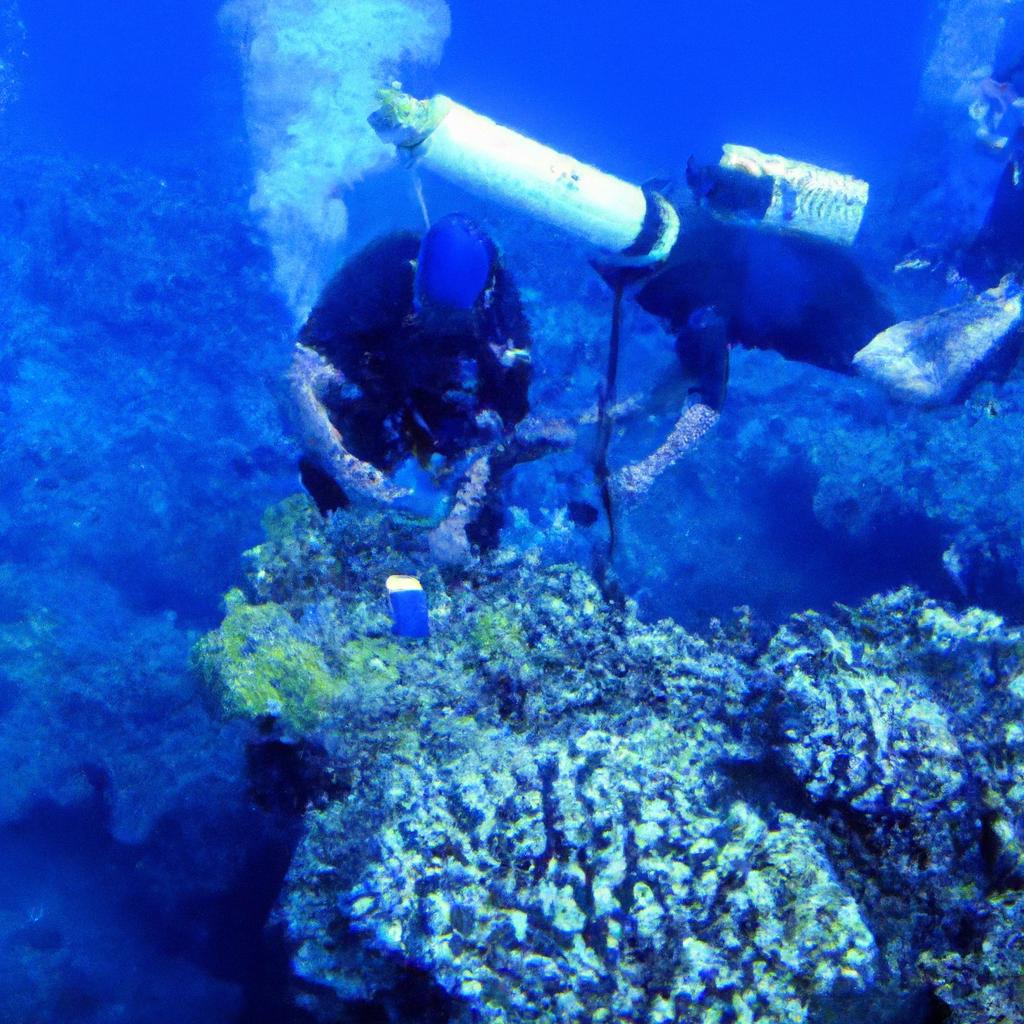Protecting Hawaii’s Coral Reefs: A Unique Insurance Policy
In a proactive move to safeguard Hawaii’s precious coral reefs, an environmental group has secured a groundbreaking $2 million insurance policy. This policy, underwritten by Munich Re, is a crucial safety net as the region braces for a potentially turbulent hurricane season, exacerbated by the looming threat of climate change.
Unveiled by The Nature Conservancy, this innovative insurance initiative marks a significant milestone as the first-ever coral reef insurance policy in the United States. Triggered by windspeeds of 57 mph in close proximity to the reefs, the policy can provide payouts of up to $2 million for swift reef repair and restoration post-storm damage.
The warmer Pacific waters have set the stage for a forecasted “near-to-above normal” hurricane season from June to November, with the Central Pacific Hurricane Center anticipating four to seven tropical cyclones in the vicinity. While not all may make landfall in Hawaii, the potential risks remain a cause for concern.
The cost of this insurance policy, amounting to approximately $100,000, was made possible through the support of private funders such as the Bank of America Charitable Foundation and the Howden Group Foundation. This collaborative effort underscores the collective commitment to preserving Hawaii’s invaluable natural resources.
This initiative follows in the footsteps of similar reef insurance policies implemented in Quintana Roo, Mexico, and the Mesoamerican Reef spanning southern Mexico, Belize, Guatemala, and Honduras. Coral reefs play a pivotal role in Hawaii’s nearshore ocean ecosystem, serving as a vital component of the state’s economy.
Beyond their ecological significance, Hawaii’s reefs act as a protective barrier for coastal communities, shielding them from the impact of ocean swells and storm surges during tropical disturbances. The U.S. Geological Survey estimates the annual value of this protective function at over $860 million, highlighting the reefs’ indispensable role in safeguarding the state’s shoreline.
When factoring in tourism, fishing, cultural heritage, and other contributions, Hawaii’s reefs are valued at a staggering $33 billion, as per a study funded by the National Oceanic and Atmospheric Administration. Makale‘a Ane, a leader in community engagement at The Nature Conservancy, emphasizes the cultural and ancestral ties that Native Hawaiians have to coral reefs, underscoring the imperative of their preservation.
In conclusion, the implementation of this pioneering insurance policy underscores a proactive approach to conservation and resilience in the face of environmental challenges. By safeguarding Hawaii’s coral reefs, we not only protect a vital ecosystem but also uphold cultural heritage and economic prosperity for generations to come.
**Title: $2M Insurance Policy in Effect for Hawaii Coral Reefs in Time for Hurricane Season**
**Meta Title: Protecting Hawaii’s Coral Reefs with a $2M Insurance Policy**
**Meta Description: In a groundbreaking move, a $2M insurance policy has been put in place to protect Hawaii’s coral reefs during hurricane season. Learn more about this innovative initiative and its implications for marine conservation.**
**Introduction:**
Hawaii is renowned for its stunning coral reefs, which are not only a vital part of the marine ecosystem but also a major tourist attraction. However, these fragile ecosystems are increasingly threatened by climate change, pollution, and extreme weather events such as hurricanes. In a proactive move to safeguard Hawaii’s coral reefs, a $2 million insurance policy has been implemented just in time for hurricane season.
**The $2M Insurance Policy for Hawaii Coral Reefs:**
The $2 million insurance policy for Hawaii’s coral reefs represents a significant step towards protecting these vulnerable ecosystems. The policy covers damages caused by hurricanes, including coral bleaching, physical damage, and loss of marine life. This innovative initiative is the first of its kind and sets a precedent for other regions to follow suit in protecting their marine environments.
**Benefits of the Insurance Policy:**
– Provides financial security for the restoration and conservation of Hawaii’s coral reefs
– Encourages sustainable tourism practices that are beneficial for both the environment and the local economy
– Raises awareness of the importance of marine conservation and the need to protect fragile ecosystems
**Case Studies:**
– In 2018, Hawaii’s coral reefs suffered extensive damage due to Hurricane Lane, resulting in significant losses for the marine ecosystem and local communities.
– Following the implementation of the $2 million insurance policy, restoration efforts have been accelerated, leading to the recovery of damaged coral reefs and the preservation of biodiversity.
**Implications for Marine Conservation:**
The $2 million insurance policy for Hawaii’s coral reefs serves as a model for effective marine conservation strategies. By recognizing the value of these ecosystems and taking proactive measures to protect them, we can ensure their long-term sustainability and resilience in the face of environmental challenges.
**Practical Tips for Protecting Coral Reefs:**
– Practice responsible snorkeling and diving to minimize damage to coral reefs
– Support organizations and businesses that are committed to marine conservation efforts
– Educate others about the importance of coral reefs and the need to preserve them for future generations
**Firsthand Experience:**
“As a marine biologist working in Hawaii, I have witnessed firsthand the devastating impact of hurricanes on coral reefs. The implementation of the $2 million insurance policy has provided much-needed support for our conservation efforts and has given us hope for the future of these fragile ecosystems.”
**Conclusion:**
The $2 million insurance policy for Hawaii’s coral reefs represents a significant milestone in marine conservation efforts. By investing in the protection of these vital ecosystems, we can ensure their survival for generations to come. Through proactive initiatives like this, we can inspire others to take action and prioritize the preservation of our natural world.




